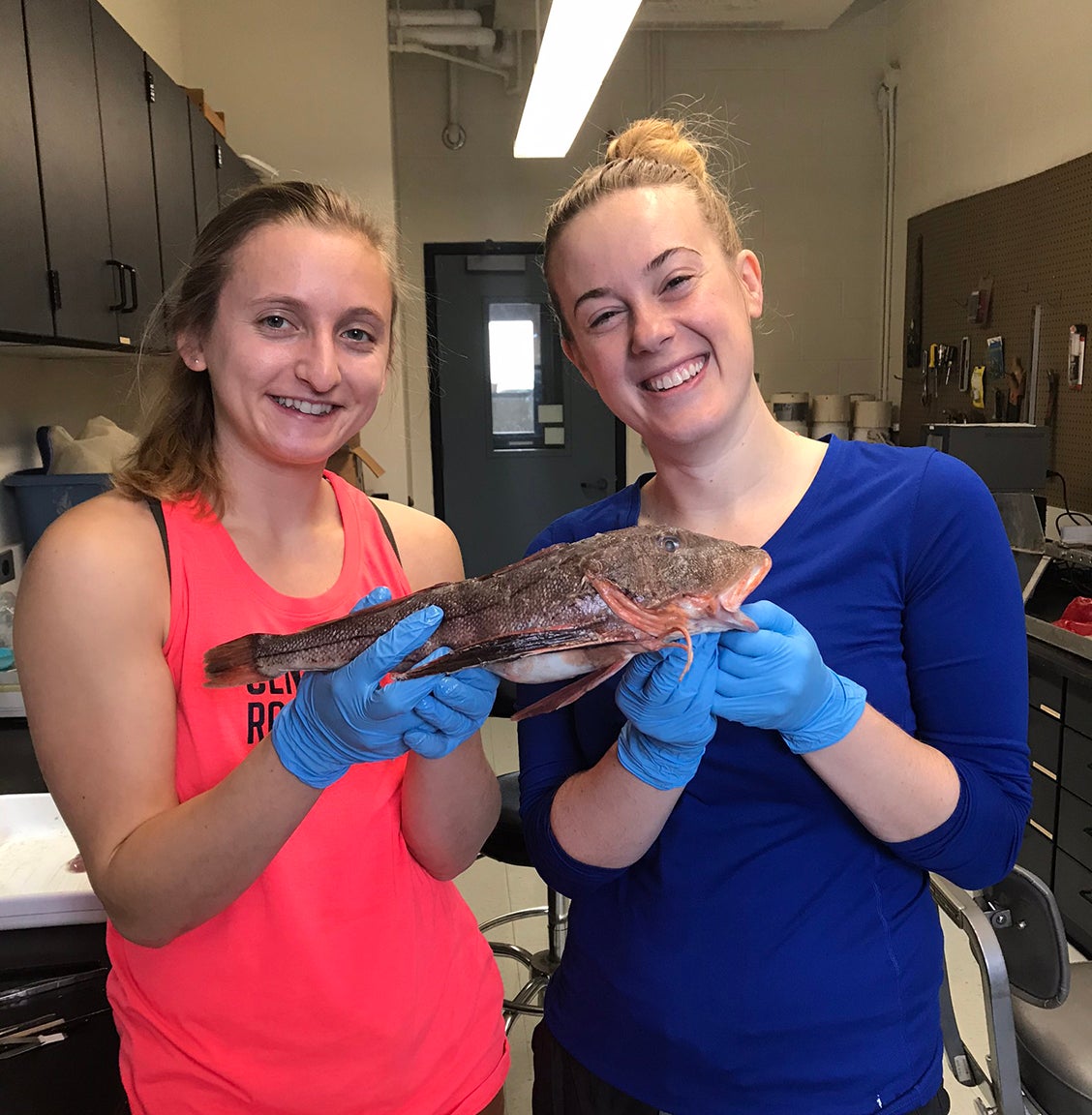December 11, 2020
A team of scientists at the University of Rhode Island is creating a series of computer models of the food web of Narragansett Bay to simulate how the ecosystem will respond to changes in environmental conditions and human uses. The models will be used to predict how fish abundance will change as water temperatures rise, nutrient inputs vary, and fishing pressure fluctuates.
“A model like this allows you to test things and anticipate changes before they happen in the real ecosystem,” said Maggie Heinichen, a graduate student at the URI Graduate School of Oceanography. “You want to be able to prepare for changes that are likely to happen, so the model provides a starting point to ask questions and see what might happen if different actions are taken.”
Heinichen and fellow graduate student Annie Innes-Gold collaborated on the project with Jeremy Collie, professor of oceanography, and Austin Humphries, associate professor of fisheries. They used a wide variety of data collected about the abundance of marine organisms in Narragansett Bay, as well as life history information on nearly every species of fish that visits the area, and data about environmental conditions.
Their research was published last month in the journal Marine Ecology Progress Series. Additional co-authors on the paper are Corinne Truesdale at the Rhode Island Department of Environmental Management and former URI postdoctoral researcher Kelvin Gorospe.
“We built one model to represent the bay in the mid-1990s, the beginning point of the project,” said Innes-Gold, “and another one that represents the current state of the bay. That allowed us to predict how the biomass of fish in the bay would change from a historical point to the present day and see how accurate the model was in its predictions.”
The model correctly predicted whether each group of fish or fished invertebrates would increase or decrease.
The students are now expanding the model using various fishery management scenarios and expected temperature changes to assess its outcomes.
“What if there was no more fishing of a particular species, for instance, or double the fishing? How would that affect the rest of the ecosystem?” asked Innes-Gold. “I’m also incorporating a human behavior model to represent the recreational fishery in Narragansett Bay. I’ve run trials on whether unsuccessful fishing trips affect whether fishermen will come back to fish later, and how that affects the biomass of fish in the bay.”
Heinichen is incorporating the temperature tolerance of various fish species into the model, as well as other data related to how fish behave in warmer water.
“Metabolism rates and consumption rates increase as temperatures go up, and this affects the efficiency of energy transfer through the food web,” she said. “If a fish eats more because it’s warmer, that affects the total predation that another species is subjected to. And if metabolism increases as waters warm, more energy is used by the fish just existing rather than being available to turn it into growth or reproduction.”
In addition, an undergraduate at Brown University, Orly Mansbach, is using the model to see how fish biomass changes as aquaculture activity varies. If twice as many oysters are farmed, for example, how might that affect the rest of the ecosystem?
The URI students said that the models are designed so they can be tweaked slightly with the addition of new data to enable users to answer almost any question posed about the food web of Narragansett Bay. They have already met with fisheries managers from the Rhode Island Department of Environmental Management to discuss how the agency might apply the model to questions it is investigating.
“We’re making the model open access, so if someone wants to use it for some question yet to be determined, they will have the model framework to use in their own way,” Heinichen said. “We don’t know all the questions everyone has, so we’ve made sure anyone who comes across the model can apply it to their own questions.”
“There’s another element that could also be added to the model in the future, and that’s spatial data,” added Innes-Gold. “It could show how the distribution of fish might change throughout the bay, which could open the door to asking all sorts of habitat questions as well.”
The Narragansett Bay food web model is a project of the Rhode Island Consortium for Coastal Ecology, Assessment, Innovation and Modeling, which is funded by the National Science Foundation.

